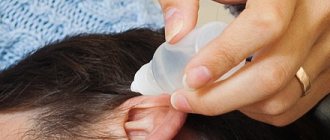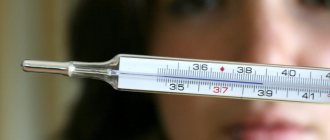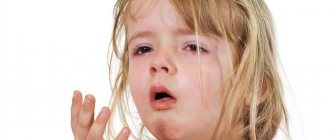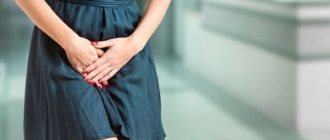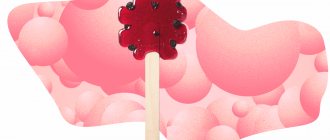Otitis media is the medical name for inflammation of the middle ear caused by infection. The disease is most common in young children, this is due to the structural features of the ENT organs in children (shorter and wider ear canal than in older children or adults). Acute otitis media is an infection that usually develops due to the accumulation of fluid in the middle ear. Otitis media can be caused by viruses or bacteria. Most children suffering from otitis media first develop acute respiratory viral infections or acute respiratory infections, which then progress to otitis media, causing inflammation and swelling in the nasal passages and eustachian tube. The risk of recurrent middle ear infections increases in children who:
- Attend a nursery or kindergarten
- Exposure to cigarette or stove smoke at home
- Have enlarged adenoids, which may interfere with drainage of the eustachian tube
Symptoms of acute otitis media usually include ear pain and fever. Otitis media with effusion (discharge of fluid or pus), also known as adhesive otitis, occurs when there is fluid in the middle ear after the infection has cleared. This condition usually does not cause pain, but may cause hearing loss in the child.
Children with acute otitis media usually improve quickly when treated with anti-inflammatory drugs and with proper care. Sometimes, if the doctor is sure that the disease is caused by bacteria, the child may be prescribed antibiotics. Children who develop adhesive otitis media and other complications may need additional physical therapy treatment.
What is otitis media?
Otitis media means any inflammation of the ear. There are:
- The outer ear (pinna and external auditory canal to the eardrum) inflammation of which will be otitis externa. Here, boils caused by staphylococci and fungal infections of the ear canal come first.
- The middle ear begins behind the eardrum and includes the tympanic cavity, Eustachian tube, mastoid cells and antrum. Inflammation in this department is called otitis media. This is the most common ear pathology in children.
- Internal otitis is also called labyrinthitis. In this case, inflammation affects the cochlea, its vestibule or semicircular canals.
Causes
In medicine, otitis externa in a child is classified by origin as follows:
- infectious: caused by pathogenic microorganisms;
- non-infectious: provoked by others, including trauma, allergies.
The most common causative agents of external otitis in a child are:
- Pseudomonas aeruginosa;
- streptococci and staphylococci;
- fungi.
The main causes of the disease are:
- improper hygiene of the outer ear: lack of proper hygienic care for the ears;
- disturbances in the formation of earwax: if there is insufficient amount of it, the natural protective mechanisms of the ear are weakened, which leads to the appearance of pathogenic microorganisms. If there is an excess of it, plugs form, which increase the risk of infection;
- getting water or a foreign body into the ears: this leads to injury to the skin, causing irritation, swelling and, as a result, penetration of the infectious process;
- decreased immunity;
- the effect of cold wind;
- severe and chronic diseases;
- frequent infections;
- infectious diseases of neighboring organs (skin infections);
- taking medications that suppress the immune system (immunosuppressants, cytostatics);
- incorrectly prescribed antibiotics (in different forms);
- dermatological diseases.
The doctor will be able to determine the cause of the disease, having the research results in hand. Treatment of external otitis in a baby is usually carried out on an outpatient basis.
Improper hygiene of the outer ear.
Who is guilty?
Otitis media develops against the background of a bacterial (less commonly viral) infection. The most common cause of its development is aggressive streptococcal or staphylococcal flora. Most often, the infection enters the ear cavity through the Eustachian tube, which balances the pressure between the ear and the nasal cavity. Therefore, otitis media is very often the result of a runny nose.
A prerequisite for the development of otitis media is a significant decrease in local immunity in the child’s body; children are more susceptible to ear inflammation:
- suffering from rickets (see symptoms and treatment of rickets in infants)
- anemia
- underweight
- chronic pathologies of ENT organs
- exudative diathesis
- Immunodeficiency takes extreme forms in diabetes mellitus, AIDS and leukemia.
But even a child without severe somatic illnesses can become a victim of otitis due to simple hypothermia. The fact is that the external auditory canal of a child, unlike an adult’s, does not have an S-shaped curvature. Therefore, any flow of cold air can provoke otitis in a child; the symptoms of otitis will directly depend on the location of the inflammation.
Complications
Indeed, this disease can give complications, but they are only possible if the treatment was prescribed late or incorrectly, as well as if the disease is severe. Here is a sample list of such complications:
- Inflammation of the inner ear, it may be accompanied by headache, dizziness, partial or complete hearing loss, tinnitus, frequent loss of balance, nausea or vomiting.
- Facial nerve paralysis or temporal bone damage.
- When an infection enters and multiplies inside the skull, diseases such as meningitis, encephalitis, and sepsis may develop.
- As a result of the chronic form of the disease, the child may develop hearing loss, which, in turn, leads to a delay in the development of the speech apparatus and the baby as a whole.
Manifestations of otitis media
With external otitis, symptoms in children may vary depending on the severity of the process.
- A furuncle of the auricle or ear canal will manifest itself as redness, swelling, and the appearance of an inflammatory tubercle, which will gradually change color from red to bluish. A purulent core will form in the center of the inflammatory formation. Until the tissue melts into pus, the pain will be very intense. After the receptors die off, it will become slightly smaller. After the boil opens and the necrotic core comes off, a deep wound will remain, which will heal with the formation of a scar.
- Fungal external otitis is characterized by the appearance of crusts and peeling in the ear canal due to a fungal infection. Itching is also noted.
- Otitis media can be divided into catarrhal otitis and purulent otitis. Catarrh is when inflammation caused by microbes manifests itself in the form of redness, swelling and intermittent stabbing or shooting pain. Depending on the severity of inflammation, the intensity of pain changes, from mild to unbearable. The pain may be located inside the ear or radiate to the cheek, temple, or throat. It is associated with a common nerve that supplies the tympanum and oropharynx. The pain may be combined with ear congestion.
- From the moment an abscess forms on the eardrum, they speak of purulent otitis media. In addition to pain, it is characterized by decreased hearing. If the abscess ruptures, a purulent effusion mixed with blood flows from the ear. Subsequently, the eardrum heals with the formation of a scar, after which hearing is restored. If the defect is significant, the membrane may not heal completely, and then hearing problems will occur.
The child will also be bothered by fever and intoxication (muscle, joint and headaches, fatigue and weakness).
- In addition to acute otitis media, a chronic inflammatory process can develop, which is divided into exudative otitis media, purulent or adhesive. Exudative and adhesive variants of otitis have mild manifestations in the form of tinnitus (cause) and hearing loss. Adhesive (adhesive) otitis media is the result of proliferation of connective tissue and fibrosis of the tympanic cavity and eardrum.
- With a chronic purulent process, periodic leakage from the ear and persistent hearing loss are observed due to permanent perforation of the eardrum.
- Labyrinthitis is manifested by pain, hearing loss and dizziness (causes), since the balance organ associated with the inner ear is involved in the process.
How to suspect otitis media at home?
Older children may well complain of pain in the ear and even talk about what kind of pain it is and where it goes. It is much more difficult with children under two years old, who still cannot really talk and simply cry in response to pain (including otitis media). Symptoms in infants with this pathology are nonspecific:
- The child’s anxiety may lead to the idea of inflammation of the middle ear
- his unmotivated crying
- refusal of breast or bottle
- Children may also grab their sore ear with their hands.
- turn your head from side to side
- if you press on the tragus of the sore ear, the child’s anxiety or crying increases due to increased pain
If there is any suspicion of otitis, the child should be immediately shown to a pediatrician or ENT doctor.
First aid for otitis media
If a visit to the doctor is postponed for objective reasons (although you cannot delay it), and the child is worried and crying, the first thing you need to do if you suspect otitis media is to numb the ear.
For this purpose, you can use non-steroidal anti-inflammatory drugs that have the property of suppressing inflammation, temperature and pain. Children are allowed derivatives of paracetamol (Tyled, Calpol, Efferalgan, Panadol, Tylenol), ibuprofen (Nurofen, Ibuklin) and naproxen (Cefekon) - see the review of all antipyretics for children, with dosages and prices. You can use syrup, tablets or rectal suppositories.
The second remedy for otitis media will be ear drops Otipax (170-250 rubles), Otirelax (140 rubles). This is a combined drug that includes the anti-inflammatory phenazone and the local anesthetic lidocaine hydrochloride. We must remember that Otipax can only be used if the eardrum has not been damaged (the ear is not leaking). For infants, 2 drops are instilled, and for children over two years old, 3-4 drops are instilled into each ear.
Video
I suggest you watch an interesting video in which a famous pediatrician will tell you what otitis media is and how to treat it correctly.
Otitis is a rather serious and dangerous disease if it is not treated on time. However, all unpleasant complications can be avoided quite simply. Monitor your baby carefully and contact your doctor if any symptoms occur. Well, we have discussed with you the main intricacies of this disease, now it’s your turn to share.
Tell us in the comments on the site if you or your child had such a disease, and what treatment was prescribed to you.
How to properly instill drops?
- Before instilling the drops, the bottle with them must be warmed to room temperature. In infants, the temperature can be up to 36 degrees. Alternatively, drops are poured from the bottle into a warm spoon and then pipetted.
- The child should be placed with his ear up and the auricle pulled back and down to straighten the ear canal.
- After the drops are instilled, the child is held with his ear up for at least ten minutes so that the medicine does not leak out.
- In children, drops are instilled into both ears, since the process is usually bilateral.
- If a baby is sucking on a pacifier, it should be removed before the drops are instilled. In combination with a stuffy nose, a pacifier can cause barotrauma to the eardrum.
Treatment of external otitis
A furuncle of the external ear (purulent otitis) is treated according to the classical scheme. At the stage of infiltration (before the formation of the rod) with anti-inflammatory drugs and alcohol compresses for the purpose of resorption. After the rod is formed, surgical opening of the abscess with drainage of the cavity, rinsing with Hydrogen Peroxide or Chlorhexidine, Miramistin and subsequent ointment dressings with levomekol until the wound is completely healed. In case of intoxication, high temperature, lymphadenitis, antibiotics are added.
Fungal infections of the ear canal are treated with antifungal ointments (clotrimazole, candida, fluconazole); if necessary, systemic antifungal agents are prescribed in tablets (amphotericin, griseofulvin, mycosist). As a rule, systemic antifungal agents are not used in children under two years of age.
Treatment of otitis media
For the youngest, preference is given to local treatment. For them, systemic antibiotics are too heavy a burden on the immune system and intestines (see list of probiotics, Linex analogues). Therefore, very strict indications are given for antibiotics:
- hyperthermia within three days from the start of local therapy
- severe intoxication
- poorly controlled pain that prevents the child from sleeping and eating normally
Drops in the ears are used in a course for seven to ten days. During this period, the child must be examined by an otolaryngologist to ensure the positive dynamics of inflammation or to adjust treatment if the result is unsatisfactory.
For older children (from two years old), therapy also begins with ear drops, supplemented with anti-inflammatory drugs (see First aid for otitis media).
A prerequisite for treating otitis media is getting rid of a runny nose. With untreated rhinitis, there is a risk of recurrent inflammation of the middle ear. For this purpose, antiviral (interferon), antibacterial (drops - isofra, polydex, protorgol) and combined (vibrocil) drops are used.
- Drops in the ears
— Otipax combines anti-inflammatory and analgesic effects. — Sodium sulfacyl (albucid ) is a universal antimicrobial and antiviral agent. — Otofa is an antibacterial drug based on the antibiotic rifamycin. Albucid and Otofa are not contraindicated in cases of perforation of the eardrum. - Polydexa - children over two and a half years old have the opportunity to use Polydexa (a combination of the antibiotics neomycin and polymyxin with the addition of the hormonal anti-inflammatory dexamethasone).
The course of treatment lasts from seven to ten days. During this time, it is quite possible to cure uncomplicated catarrhal otitis media in a child. Treatment should be prescribed and monitored by an ENT doctor.
- Antibiotics in tablets, suspensions or injections
Requirements for these drugs: safety, non-toxicity, achieving sufficient concentrations at the site of inflammation, maintaining therapeutic doses for a long time (at least eight hours for a comfortable frequency of doses per day). The duration of antibiotic therapy is seven days, except for drugs that can accumulate and maintain therapeutic concentrations in the blood for a week or ten days (for example, azithromycin, which is prescribed for three to five days).
- Penicillins. Semi-synthetic (oxacillin, amoxicillin, flemoxin, ampicillin, carbenicillin) and inhibitor-protected ones are preferred, allowing them to resist resistant strains of microbes (amoxiclav, flemoclav, augmentin, unasin, sultamicillin, ampixide).
- Cephalosporins of the second (cefuroxime, cefaclor), third (ceftibuten, ceftriaxone, cefotaxime, cefazidime) and fourth (cefepime) generations.
- Macrolides are currently replacing cephalosporins. More convenient in dosing, course duration and administration forms (tablets, suspension). Treatment of otitis media in children is carried out with azithromycin (azithral, sumamed, hemomycin), clarithromycin.
- Aminoglycosides are the drugs of choice if there is staphylococcal purulent otitis in a child. Treatment with kanamycin, gentamicin, sisomycin, amikacin is carried out mainly in an inpatient setting due to nephrotoxicity.
Features of antibiotic therapy in children include the refusal to use fluoroquinolones, since they are contraindicated in children under 18 years of age, and also in order to reduce the number of antibiotic-resistant infections.
On the issue of antihistamines
Classic treatment regimens for otitis media involve the prescription of antihistamines to reduce the allergic component of inflammation and reduce swelling. Second- and third-generation drugs that do not cause drowsiness or have minimal sedative effect are recommended: claritin, desloratadine, loratadine, clarisens, cetirizine, ketotifen (see allergy medications).
However, today a number of specialists (primarily American ones who conducted selective clinical studies involving pediatric patients) believe that the use of this group of drugs for otitis is inappropriate, since no direct relationship has been identified between their use and the rate of recovery from the disease. Today, the question remains open, since there are still no full-fledged standards for the treatment of acute otitis in children.
Treatment of otitis media with folk remedies
Traditional methods of treating otitis in children are quite diverse, but it should be noted that turning a child into a testing ground for experiments is inhumane and reckless. Of course, in field conditions, when a doctor and pharmacy are unavailable, a person will resort to any available means to relieve the pain and suffering of a child. Therefore, we will focus on the most adequate and less harmful to children's health folk remedies for combating otitis media (ear inflammation).
Otitis externa, which occurs in the form of a boil in the infiltration stage (with a reddened tubercle without a purulent core), as well as catarrhal otitis media in children, can be treated with folk remedies. You can use a vodka or alcohol compress or lotions:
- boric, camphor alcohol or vodka are applied to a gauze pad, which is applied to the ear area
- plastic film or wax paper is placed on top
- the bandage is strengthened with a handkerchief or scarf
- exposure time from 15 to 30 minutes (the younger the child, the shorter the procedure time)
- decently resolves infiltrates and iodine
- aloe leaves are also used, cutting them in half and applying a cut of the leaf to the abscess
No warming procedures for otitis media are acceptable. Treatment with alcohol-containing solutions is strictly prohibited in children under one year of age, even for external use. In older children it is also not advisable; it is especially contraindicated to use undiluted medical alcohol for compresses. It is better to use camphor, boric alcohols or vodka. Instilling boric or camphor alcohol into the ear is permissible, but only in children over 6 years old - no more than 2 drops.
In case of fungal infection of the ear canal, people use wiping it with a soda solution (not to be confused with instillation or rinsing). Soda creates an alkaline environment in which fungi do not reproduce well, but it is not able to completely cure a fungal infection.
Sollux (blue lamp) is a thermal procedure indicated for non-purulent otitis media. However, in everyday life it is difficult to distinguish non-purulent otitis media from purulent ones, especially since a bacterial infection cannot be heated. Therefore, any traditional methods should be agreed upon with the treating pediatrician.
Compresses on the ear
According to Dr. Komarovsky, a compress on the ear is not an effective method of treating inflammation, but it also does not have a negative effect on the child’s condition.
It is used only to reassure grandmothers who do not see how and when their beloved grandson is being treated, and a bandage made of folded gauze is used as an alibi for a caring mother.
But not all pediatricians agree with the point of view of the famous video doctor, therefore they advise parents to use compresses to reduce pain and warm the ear in case of catarrhal disease, that is, in the absence of purulent discharge from the ear canal.
Parents need:
- fold a bandage out of gauze;
- make a cut in the middle;
- moisten gauze in vodka or alcohol solution;
- squeeze out, apply to the sore ear;
- cut a piece of paper, a little larger than the bandage, put it on top of the compress, it will absorb excess alcohol;
- Carefully place a layer of cotton wool on the paper so that it extends beyond the edges of the compress;
- Put a hat on the baby and tie a scarf.
You can keep the compress for 4 hours. It is better to do it at night so that the baby does not rip off the bandage.
Prevention of otitis
- Rational ear hygiene. It is unacceptable to clean a child’s ears with improvised means or to penetrate deep into the ear canal.
- After bathing, the child needs to shake out or blot the water from the ear.
- Children under one year old should not be exposed to drafts without hats covering their ears.
- It is necessary to promptly and fully treat all diseases of the ENT organs (tonsillitis, tonsillitis, rhinitis, pharyngitis). Bilateral otitis in a child often develops against the background of a runny nose.
Author:
Postnova Maria Borisovna general practitioner
Important
Do not allow your child to walk around without a hat during the cold season. If your head freezes, your nose will run and your ears may hurt.
The more often we care for children’s ears (we clean them with cotton swabs, wash them, wipe them), the more likely it is that the child will get otitis media. You should not clean your ears more than once a week or a week and a half. Sulfur protects the ear from inflammation.
When mom and dad, sitting in the front seat of the car, open the window, a draft blows directly into the child’s ear. Don't forget this.
Having barely cured otitis, some parents take their child to the pool. It is a bad idea. Wait 4-5 weeks and then harden up.
Do not take a weak, often ill child on vacation from winter to summer. With sudden changes in temperature, the body is forced to adapt, the immune system weakens and new diseases are not long in coming.
